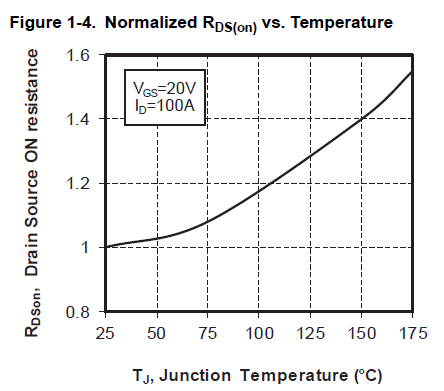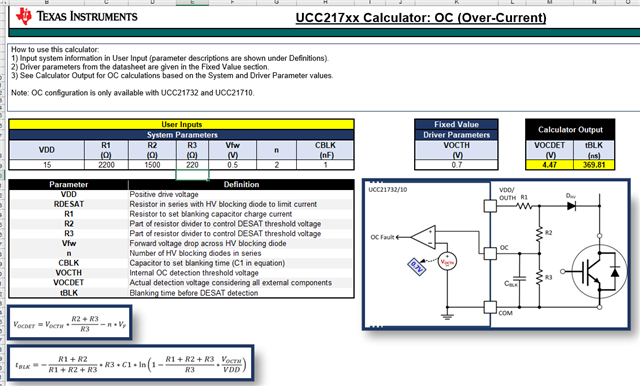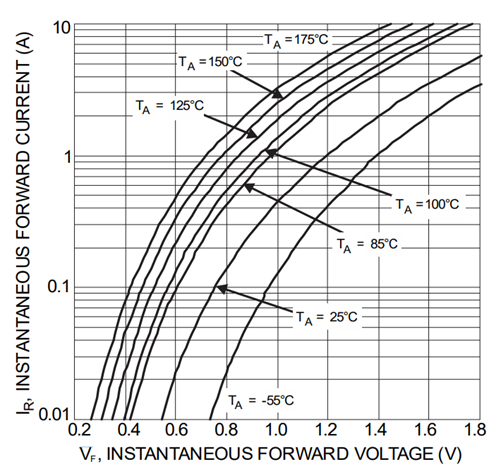Tool/software:
Hello Experts,
We are designing the OC threshold limits and a little confused as to that limits we are allowed to set.
Firstly the SiC module we are using is the MSCSM120HM16CTBL3NG
Looking at the datasheet, the Rds(on) ranges from 12.5mohm to 16mohm

They also mention the Rds(on) vs the junction temperature curve(Tj)

we are a little confused as to what Rds(on) value do we take for OC calculation
Secondly we would like to allow as much current as possible, the before the OC is triggered., Looking at the SiC data sheet:

So is it okay to design the OC so trigger at 300 amps, or should OC trigger at 120 or 150 Amps?
This is what we have so far, and would like to hear your thoughts on the safe limits of OC:

The high voltage diode used is the US3M-13, looking at its Ir vs Vf curve we see that the Vf will be approx 0.5v, if R1 is 2.2K (20v/2.2k = 9mA)

I calculated the current thresholds if the typical value of Rds(on) is 1`6m ohm and 12.5 mOhm, w.r.t the Rds(on) vs Tj curve posted above, If we consider the Rds(on) to be 12.5 mohm the threshold crosses 300 Amps !!, Is my understanding correct?

Thirdly, the OC circuit shown in the calculator tool, is primarily dependent on the the HV diodes, if the HV diode fails , the high voltage is going to be passed on to R2 which can lead to failure of UCC? Also capacitive coupling across the diode will bring high voltages to the top of R2, and also possibly into the IC. How are these points taken care in the OC design using UCC21710?

